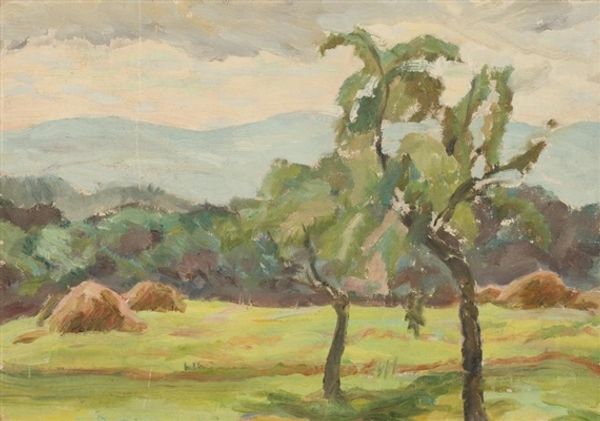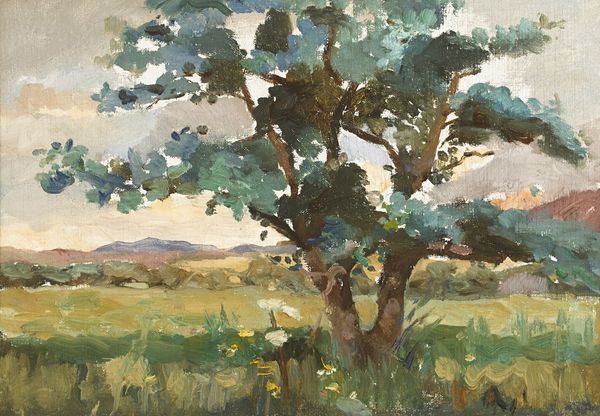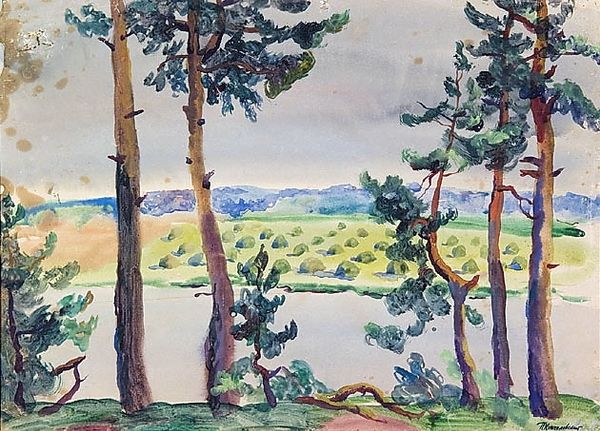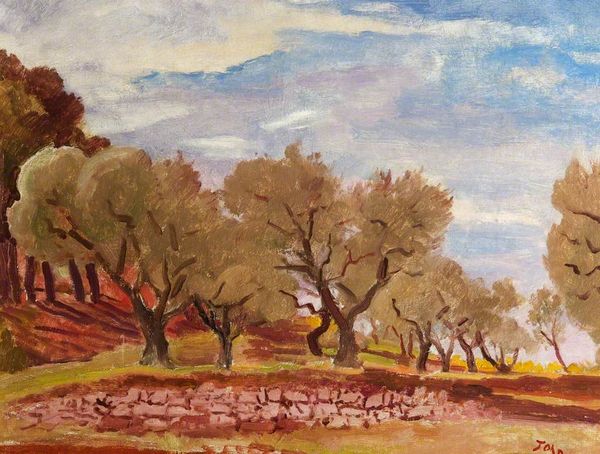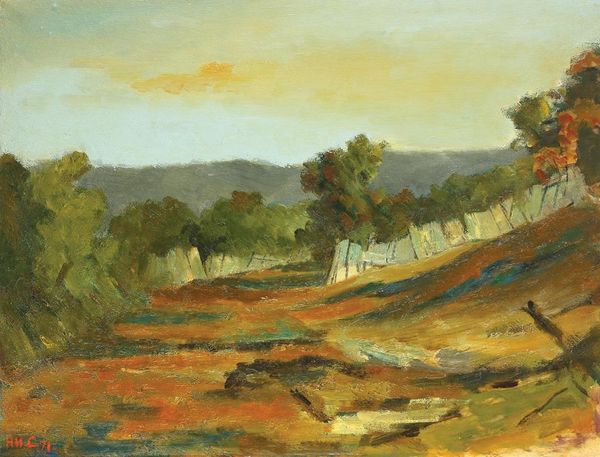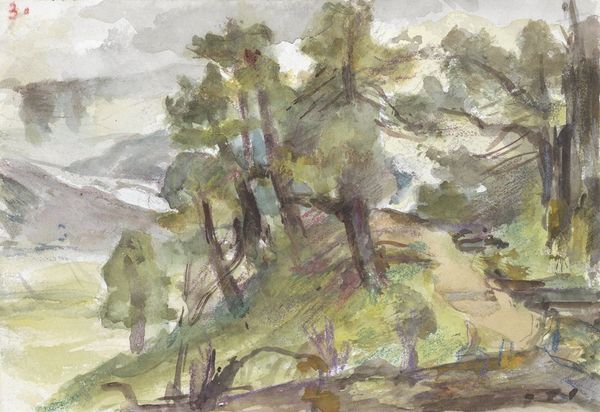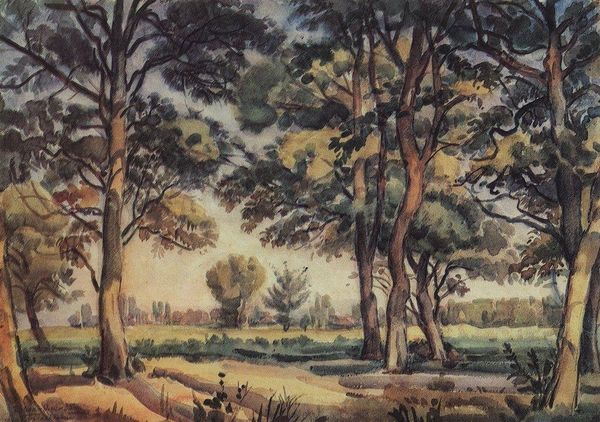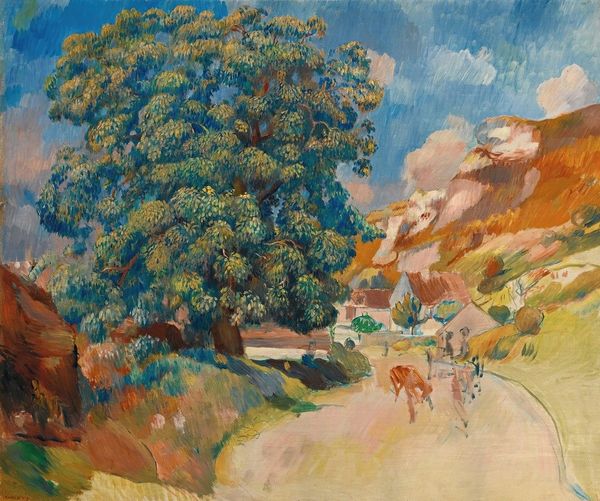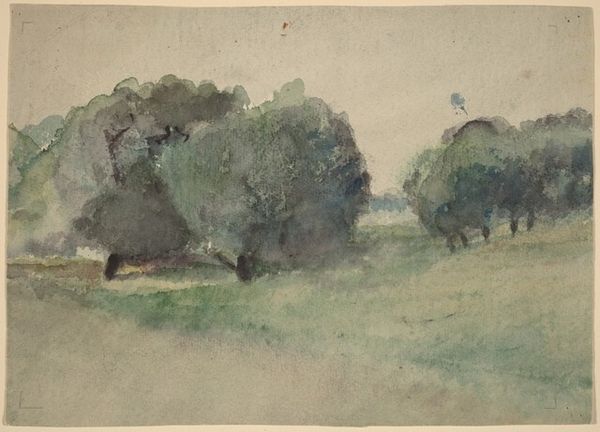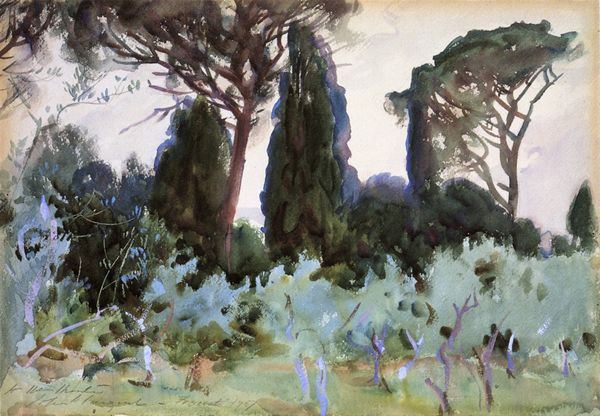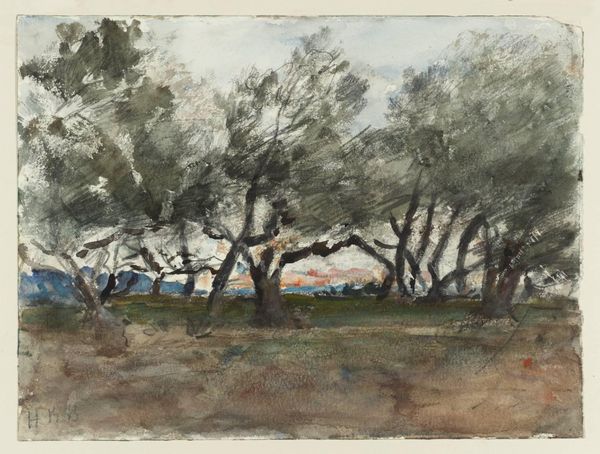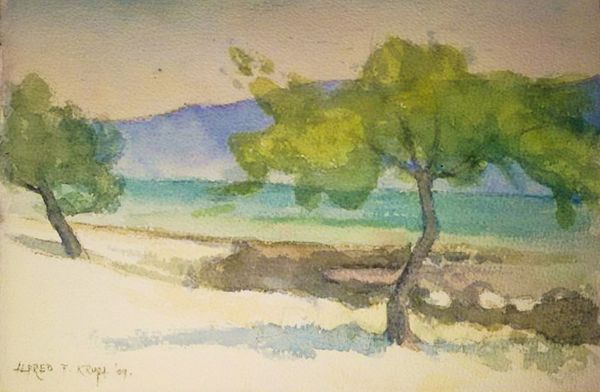
Copyright: Medi Wechsler Dinu,Fair Use
Curator: This watercolor painting, “Spring Landscape,” was created by Medi Wechsler Dinu in 1951, apparently en plein-air, capturing a quick moment, wouldn't you say? Editor: Immediately I am struck by its melancholic, almost subdued light, considering it's meant to evoke "spring." There's a sense of the earth exhaling, perhaps a moment of rest, before bursting into full bloom. Curator: Yes, it’s spring seen through a slightly world-weary lens. It almost vibrates, with how Dinu captured that moment. Editor: The placement of the trees creates an interesting framing; almost like viewing the landscape through a proscenium arch, highlighting themes around the pastoral, but also questioning our position within the natural world. Where do we truly belong? Curator: It’s so funny, isn't it? To be an artist trying to capture a world outside yourself, but it all comes out as *you*. That romantic idea of being in harmony with nature is always colored by the observer, and Dinu clearly acknowledges that. She’s present, her touch, her way of seeing, undeniably there in the strokes. Editor: Exactly. Romanticism often glosses over the violence inherent in land ownership, erasure of indigenous presences, or the romanticization of rural poverty, aspects frequently rendered invisible through selective representation of landscape, even if that landscape isn’t explicitly political. What does Dinu elide in this painting, and for what purposes? What voices are missing from this romantic vision? Curator: Well, her vantage point gives a definite privilege – that of being able to stand and survey it, rather than, say, toil in it. So I see that privilege baked right in. But that tension adds complexity for me, the way you can be charmed and aware at the same time. Perhaps that's what makes it endure. Editor: Perhaps. And the very nature of plein-air painting introduces additional levels of complicity within landscape tradition, specifically with its connection to colonial enterprises where sketches were commissioned by wealthy families to be integrated in cartography as they began developing trade opportunities across the Global South. Curator: It certainly invites all sorts of interpretations when viewed through today's awareness. It is good to remember those contexts; I almost want to apologize to the work! Still, it does ask you to return to the scene, re-seeing its hues, with her in dialogue with her moment. Editor: Agreed. It's a valuable exercise, confronting both the beauty and the underlying narratives. Art becomes more alive that way, sparking new growth in perception.
Comments
No comments
Be the first to comment and join the conversation on the ultimate creative platform.
